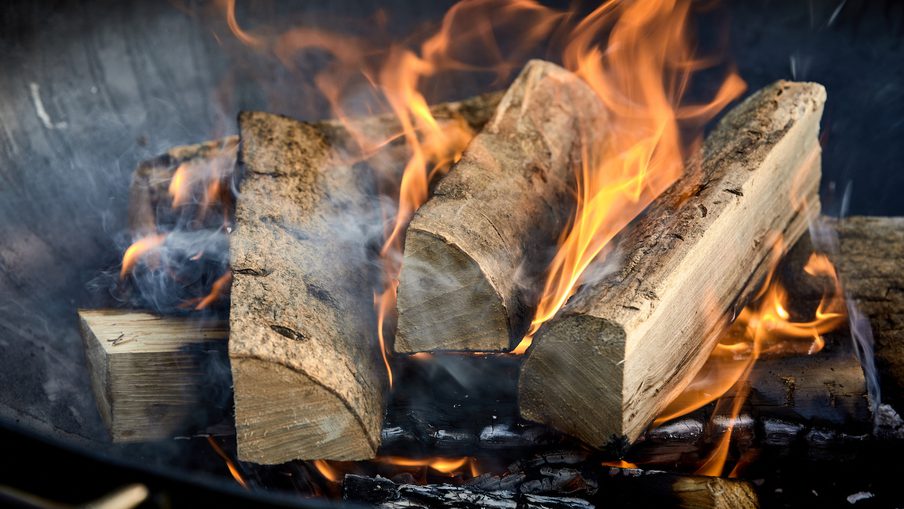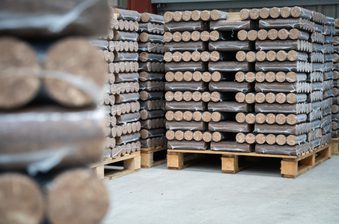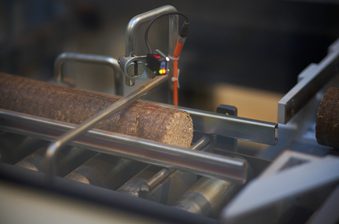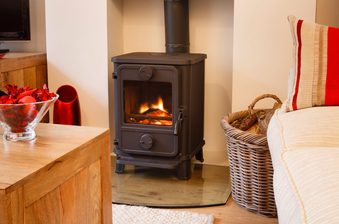The sound of a crackling wood fire is a cosy and comforting wintertime experience, but too much popping likely indicates that your firewood’s moisture content is too high.
Some crackling is normal, but if your firewood hasn’t been properly dried and is unseasoned or ‘wet’ (over 20% moisture content), then it will produce a lot of popping noise.
This indicates inefficient combustion, meaning your fire will give off a lot less heat. Excessive popping will usually be accompanied by more smoke, which leads to creosote buildup (a fire risk).
The lower the moisture content of your wood, the less crackling you should expect. Kiln-dried firewood logs, with a moisture level between around 10–20%, will pop less often.
To minimise crackling and maximise heat performance, consider a high-performance wood fuel with low moisture content – ideally below 10% – like wood briquettes.
Why wood pops when being burned
All wood, even well-dried wood, contains some moisture. As the wood heats up, this moisture turns to steam and the wood’s compounds (such as cellulose and hemicellulose) break down and release gases.
This causes pressure to build up inside the wood. Eventually, once the pressure reaches a certain level, the steam bursts through the wood fibres and ruptures the surface, causing a tiny pressure release (or a mini explosion). This sudden escape of gas is what creates the familiar crackling or popping noise.
Sap and other organic compounds (like resins and oils) in the wood can also vaporise and ignite, contributing to the popping noise.
What to do about too much popping and crackling
All wood contains some moisture, so some crackling is nothing to worry about.
But how much popping is too much? It’s hard to say, but unseasoned logs typically produce multiple pops every minute, kiln-dried logs every minute or so, briquettes every couple of minutes. You may even find briquettes to be almost silent.
You can check the moisture level of your wood with a pin wood moisture gauge. These can be picked up online and from DIY stores.
You can also visually inspect the wood – it may have a darker colour. There’s also a noise test. Two pieces of wet wood will have a duller sound when knocked together.
Think you’ve got a problem? Consider firewood that has been properly kiln-dried and is ‘Ready to Burn’ with a moisture content below 20%.
Better still, have a look at wood briquettes. They have a moisture level usually below 10%. Denser, drier and with less ash content, they combust more efficiently, delivering higher temperatures for a longer period of time.
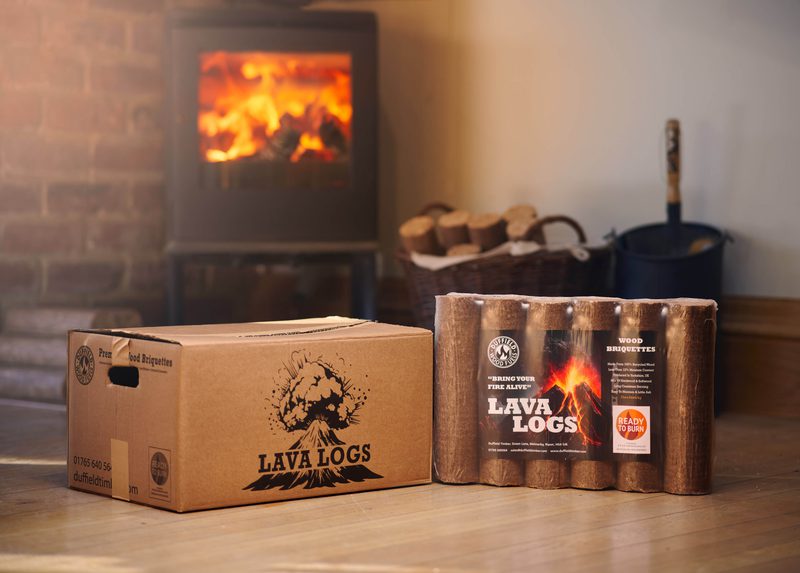
We’ve actually done some interesting tests. Traditional logs reach an average high temperature of reaching an average high of 170°C, but after 2 hours 30 minutes of burning, registered only 30°C.
On the other hand, briquettes reached an average high of 220°C and maintained these heights for longer, still delivering 92°C of heat even after 2.5 hours of burning.
Level up your firewood with Lava Logs
Whilst some crackling is normal, too much might indicate a moisture problem with your wood fuel.
With a moisture level of 9.3% and only 0.7% ash content, Lava Logs wood briquettes are perfect for a hot, clean and long-lasting burn (with minimal popping and smoke).
Made from highly-compacted, 100% recycled quality timber, their superior performance means they’re also around 60% more cost effective than standard firewood.
